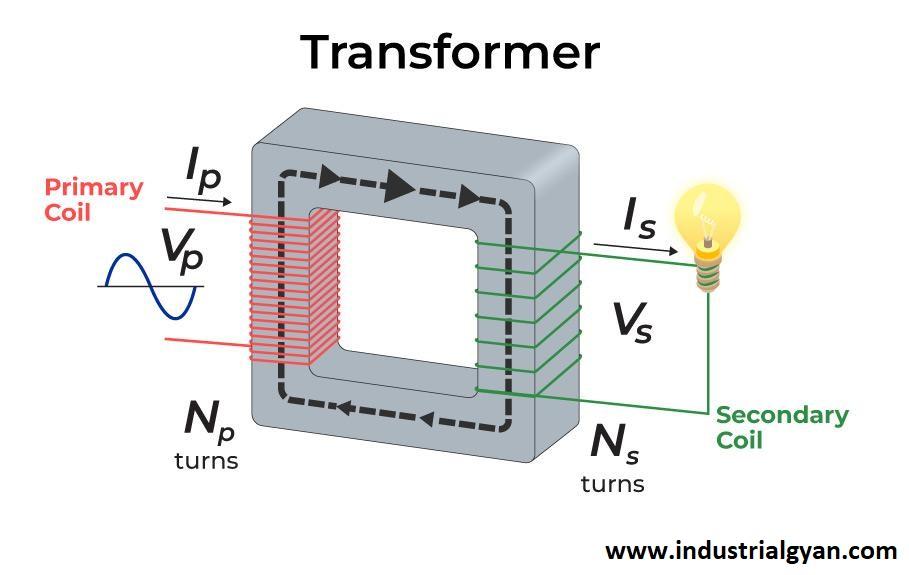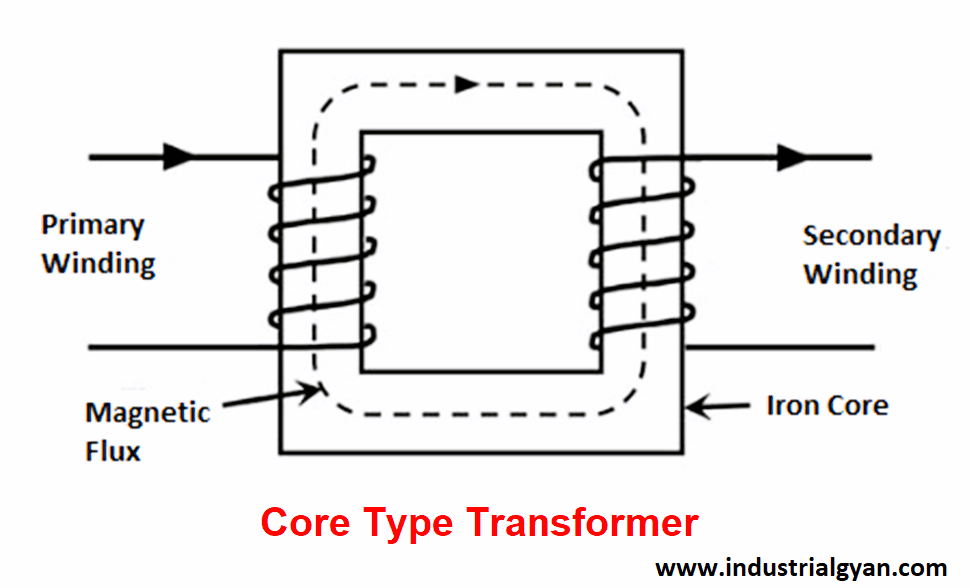Hello guys, today we are discussing the main topic of the core type transformer, types of the transformer, working of the transformer, use of transformer, advantages, and disadvantages of the transformer, and also a reference list.
The transformer is an electrical device that converts electrical energy from one form to another.. The conversion of the voltage and current value by using the mutual induction between the primary and secondary windings.
What is Transformer? You should know about it.
Transformers play a crucial role in electrical power distribution and transmission by converting low-voltage high currents into the high-voltage low currents. They only function with an alternating current power supply.
A transformer not having any moving parts just based on electromagnetic induction between the primary winding and secondary windings and with minimum maintenance. Combination of the two coil primary and secondary coils connected to the load. A primary coil is connected to a primary power supply from the sources.
Types of the transformer:-
- Step-up transformer.
- Step-down transformer.
Step-up transformer:-
This type of transformer, also known as a Generating transformer or GT, converts low voltage high current into high voltage and low current. Electric power plants use these transformers, with the primary windings connected to the generator (alternator) and the secondary connected to the bus-bar grid. They find wide applications in transmission, power generation, and industrial settings.
Step-down transformer:-
Step-down transformers step down high voltage low current to low voltage high current for distribution of power supply in domestic and small business applications. They are less powerful than step-up transformers and are used for operating electrical appliances that require low voltage.

Transformer diagram
Construction of the transformer:-
The copper coil wraps around both sides of the magnetic frame, with the primary windings connected to the power supply source and the secondary windings connected to the load. The transformer can only operate with an alternating current (AC) supply, creating a magnetic field in the primary windings and inducing it into the secondary windings.
Here are some parts of the transformer with descriptions:-
- Core:- The steel strip laminated stacks of strip formed the core of the transformer. The laminated insulated steel strips help in reduces the eddy current losses in the transformer.
- Windings:- The copper wire wrapped around the core of each side of the transformer. The number of turns in windings is the ratio of determining the input and output windings. The used wire is chosen as per the applications
- Terminals:- The final end of the winding wire connected t0 the terminal for the electrical circuit.
- The cooling system:- dissipates heat and is essential for proper functioning. Mainly two types of cooling systems are air and liquid cooling system. The liquid cooling system is a more efficient way of cooling compared to the air cooling system. i.e core type transformer.
- Insulation:- The insulation maintains the prevention of the direct electric current flow from in between the coils. The material used is Nomex and Mylan.
Working of the transformer:-
The primary windings connected to the input power supply produce around the magnetic field. The secondary windings is connected to the load. It starts to generate the magnetic field with the influence of the primary windings. According to the law is based on electromagnetic mutual induction.
- The step-up and step-down ratio of the primary and secondary windings determines the voltage generated, with the voltage in the secondary winding being 50% of that in the primary winding.
- This makes the transformer highly efficient compared to other electrical components.
In a summary, The transformer is based principle of electromagnetic induction, and the step up and step down is just based on the number of turns in the primary and secondary windings of the core. It is based on the conservation of energy such as input power equal to output power with minimum losses.
Advantages of the transformer:-
- Voltage regulation:- It can increase and decrease the voltage of electrical power that helps in transmission to a long distance with minimal losses.
- Efficient power transfer:- Transformers are highly efficient in energy conversion in electrical circuits.
- Isolation:- It helps provide better isolation between the input and output circuit. In core type transformer have is air insulted
for more information on electrical click here:

I am a highly motivated and skilled individual with a passion for Electrical engineering. I have 1 year of experience in Robotics and Electrical engineering, which has allowed me to develop a strong set of skills in PLC, Painting Robots, SCADA. I am a quick learner and am always looking for new challenges and opportunities to expand my knowledge and skills. I am a team player and enjoy working with others to achieve a common goal. Successfully completed many projects for a various clients in the automobile sector.
Thank You

